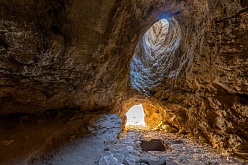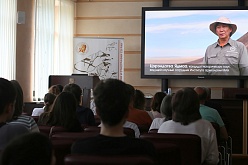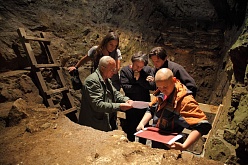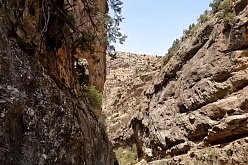Surungur Rock Shelter
- Description
- Links
- Video
The Surungur site, located 10 km away from Aydarken in the southern Kyrgyzstan, is associated with a large grotto and contains undisturbed cultural layers spanning from the early Neolithic period (8,000 to 6,500 BP) to the Bronze Age (3,300 BP). Remarkably, this site has an intact stratigraphy, presenting a sequence of cultural layers. Through the study of Surungur, archaeologists have uncovered artifacts, including stone and bone tools, adornments, animal bone remains, ancient fire pits, and residential structures left behind by ancient inhabitants.
Of particular significance is the fact that Surungur was occupied during a crucial phase of human history, during the formation of a production-based economy. The Neolithic period marked the domestication of livestock and the development of agriculture. Surungur provides a unique window into the lives of ancient people during this transformative era. Study of the Surungur site allows for detailed insights into the neolithization process in the mountainous region of Central Asia, capturing the transition from the Ancient Stone Age to the New Stone Age, or Neolithic period.
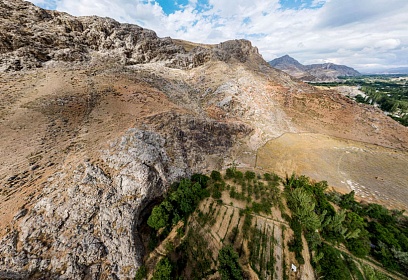
Location: Kyrgyz Republic, Batken Region
The archeological studies began in:: the Surungur Neolithic site was discovered in 2017 by a Joint Russian and Kyrgyz Expedition led by S.V. Schneider and T. Chargynova
Estimated layers age: the most ancient are 6.5 to 8 ka
Human species: anatomically modern humans
Study history
The Surungur site was initially mentioned by the Uzbek archeologist Mirvakhid Razykovich Kasymov in 1972, although it remained unstudied at that time. In 2017, the site was re-discovered by the Russian and Kyrgyz Expedition in cooperation with the Institute of Archeology and Ethnography of the Siberian branch of the Russian Academy of Sciences, and the Zh. Balasagyn National University of Kyrgyzstan.
The site location is associated with the rock shelter located on a south slope of the Katrantau ridge and oriented towards northwest. In 2018, an initial geophysical survey was conducted to identify the most promising area for excavations. Currently, the archaeological investigation of the site is ongoing under the supervision of the international expedition. The PaleoCentralAsia research project website may provide additional information about it.
The most well-known finds are:
Unique adornments made of stone and bone as well as a rich faunistic collection and stone tool collections were discovered at the site.
-
Studying macro-coals obtained from coal layers of the deposits at the Surungur archeological site. (Fergana Valley, southern Kyrgyzstan). Theory and Practice of Archaeological Research. 2022 (In Russ.)
-
Studying Organic and Elemental Composition of Fire-Pit Remains at the Surungur Archeological Site with the Assessment of the Used Fuel. Journal of Siberian Federal University. Series: Chemistry. 2022 (In Russ.)
-
Multidisciplinary Study of Burnt Deposits at Surungur, Fergana Valley, Southern Kyrgyzstan. Archaeology, Ethnology & Anthropology of Eurasia. 2021
-
Signs of Production Economy at the Kurteke (Tajikistan) and Surungur (Kyrgyzstan) Sites. Archeological Sites in South Siberian and Central Asia: From First Stock Breeders to State Formations. Proceedings of the International Science Conference. 2021 (In Russ.)
-
Results of Geophysical Research of the Surungur Site (South Kyrgyzstan). Problems of Archeology, Ethnography, Anthropology of Siberia and Adjacent Territories. 2019 (In Russ.)
-
Bone Industry of the Surungur Site (Fergana Valley, Kyrgyzstan): Proceedings of 2019. Archeology of Kazakhstan. 2019 (In Russ.)


